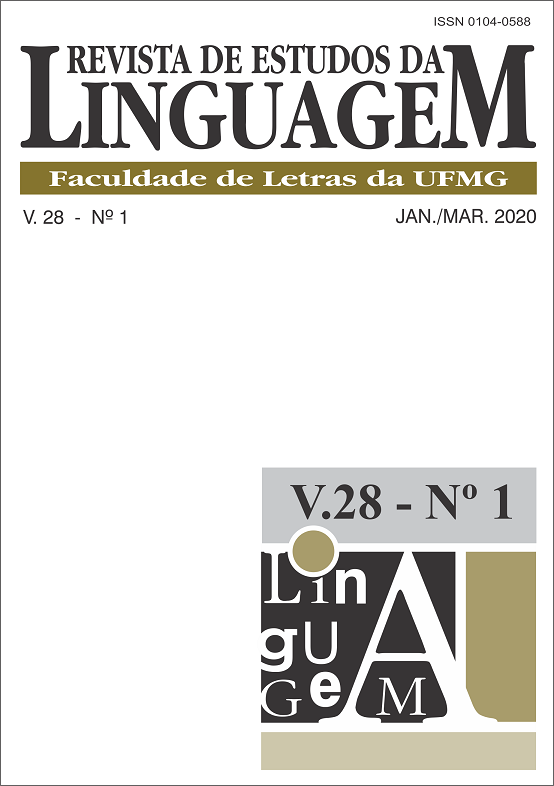Elementos de coesão no Corpus de Língua Portuguesa em Tradução: investigando a classe gramatical conjunção numa perspectiva contrastiva linguística e textual / Cohesive devices in the Corpus de Língua Portuguesa em Tradução: investigating conjunctions in a contrastive perspective within a text typology
DOI:
https://doi.org/10.17851/2237-2083.28.1.13-40Palavras-chave:
Corpus de Língua Portuguesa em Tradução, tipologia linguística, tipologia textual, conjunção,Resumo
Resumo: Esta contribuição perfaz análise de elementos de coesão em textos originais e traduzidos, averiguando o impacto das tipologias textual e linguística na frequência de ocorrência de itens da classe gramatical conjunção (NUNES, 2014). Dados foram obtidos a partir do Corpus de Língua Portuguesa em Tradução, um corpus paralelo bilíngue bidirecional no par linguístico inglês-português brasileiro composto por oito tipos de texto: artigo acadêmico, discurso político, divulgação científica, ficção, manual de instrução, propaganda turística, resenha e website educacional. Utilizou-se o TreeTagger para anotação morfossintática e o ambiente de programação R para extração automática e tratamento estatístico das frequências. Verificaram-se frequências significativamente acima das esperadas em textos dos tipos resenha e discurso político, corroborando a hipótese sobre a explicitação de marcas conjuntivas em textos argumentativos. Ainda, os achados parcialmente confirmaram a hipótese da explicitação significativamente acima da esperada nos textos traduzidos e nos textos originais e traduzidos em português brasileiro. Também revelaram significâncias estatísticas proeminentes nas frequências obtidas em textos dos tipos ficção e website educacional, apontando nestes tendência à explicitação de conjunções nos textos traduzidos em inglês e naqueles a mesma tendência nos textos originais e traduzidos em português brasileiro. Os resultados dessa investigação sobretudo contribuem para os estudos descritivos da tradução no que tange à descrição linguística do inglês e do português brasileiro em seus modos escritos.
Palavras-chave: Corpus de Língua Portuguesa em Tradução; tipologia linguística; tipologia textual; conjunção.
Abstract: This contribution delves into the investigation of cohesive devices in original and translated texts by querying the impact of text and language typologies on the frequency of conjunctions (NUNES, 2014). Data was obtained in the Corpus de Língua Portuguesa em Tradução, a bilingual bidirectional parallel corpus in the language pair English-Brazilian Portuguese. The corpus is comprised of eight text types: research article, political speech, science popularisation, fiction, instruction manual, tourism leaflet, review and educational website. TreeTagger was used for POS tagging and R environment utilized to perform automatic word frequency and significance testing. The results showed highly above expected frequencies in reviews and in political speeches, thus corroborating explicitation hypotheses as to the frequency of cohesive marks in argumentative texts. Also, the explicitation hypothesis as to significantly above expected frequencies of conjunctions in translated texts and in the original and translated texts in Brazilian Portuguese was partially corroborated. Findings also showed relevance in statistically significant frequencies in fictional and educational website texts. As to the former, a tendency for the explicitation of conjunctions in original and translated texts in Brazilian Portuguese was revealed. Conversely, frequencies in the latter pointed to a tendency for the explicitation of conjunctive marks in translated texts in English. The findings mostly contribute to descriptive translation studies concerning language description of English and Brazilian Portuguese in their written modes.
Keywords: Corpus de Língua Portuguesa em Tradução; language typology; text typology; conjunction.





